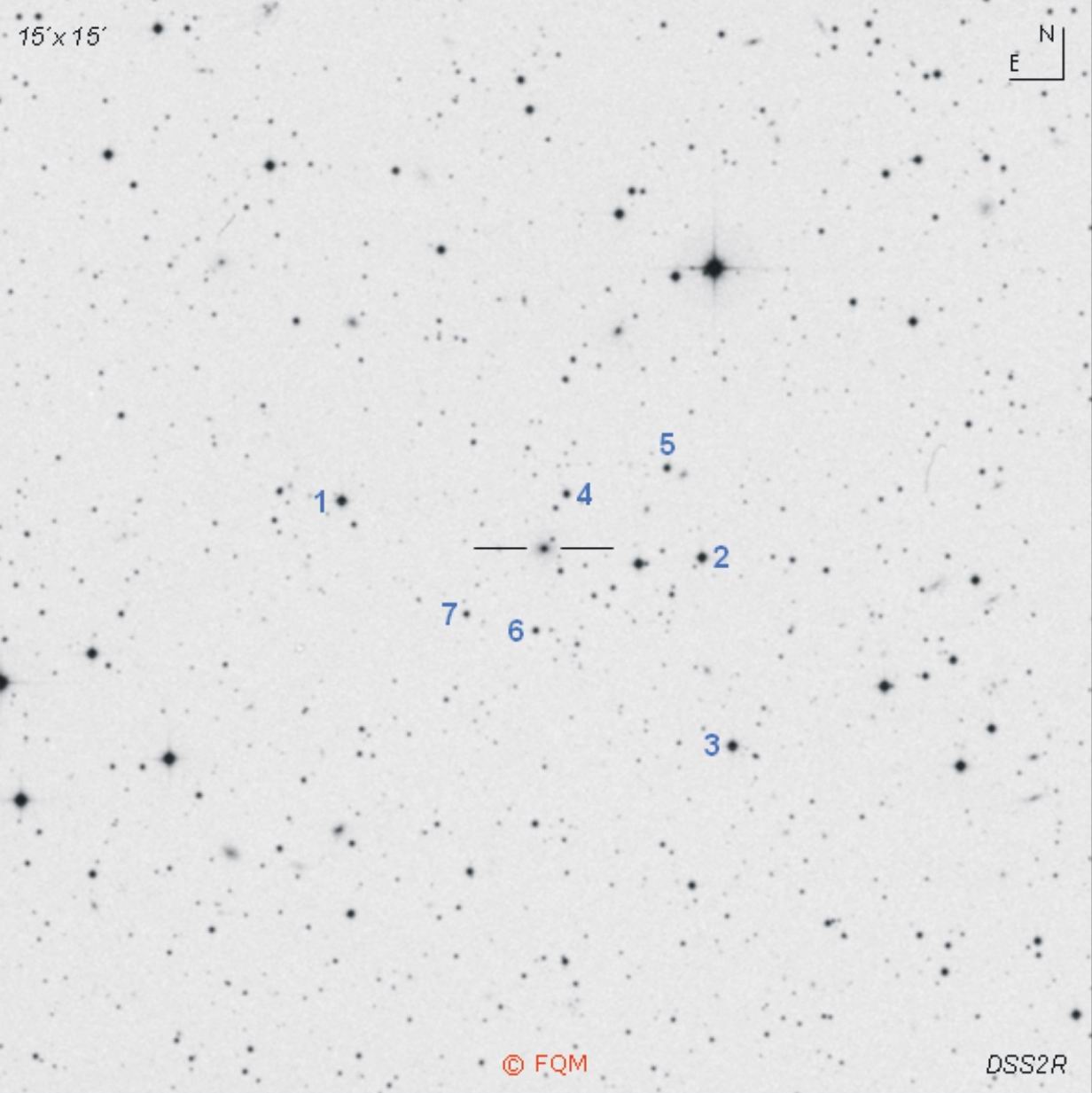
| Frankfurt Quasar Monitoring |
| 1ES 1959+650 |
| Cross-Identifications |
TXS 1959+650, 87GB 195929.2+650039, 1959+650 GB6 B1959+6500, QSO B1959+650, XSS J19592+6505 1RXS J200000.0+650854, 2MASX J19595975+6508547 2XMM J195959.9+650854, 1FGL J2000.0+6508 SWIFT J1959.7+6509, 0FGL J2000.2+6506 WISE J195959.83+650854.7 |
| Equat. coordinates | RA 19 59 59.9 DE +65 08 55 (J2000) |
| Constellation | Draco |
| Type |
BL
Lac |
| Redshift | z=0.047 |
|
Distance
(2)
(3) |
189 Mpc |
| Total mag range (mv) (4) | 12.8 - 16 |
| Catalog Magnitude | 12.8 (1) / 14.71 (2) |
| Absolute Magnitude (1) | -24.5 MB |
| Light Travel-Time (2) | 0.603 × 109 yrs |

Comparison stars
| star | V | Rc |
| 1 | 12.67
(0.04) |
12.29
(0.02) |
| 2 | 12.86
(0.02) |
12.53
(0.02) |
| 3 | 13.18
(0.02) |
12.27
(0.02) |
| 4 | 14.53
(0.03) |
14.08
(0.03) |
| 5
var |
14.54
(0.03) |
14.00
(0.02) |
| 6 | 15.20
(0.03) |
14.78
(0.03) |
| 7 | 15.24
(0.03) |
14.79
(0.03) |
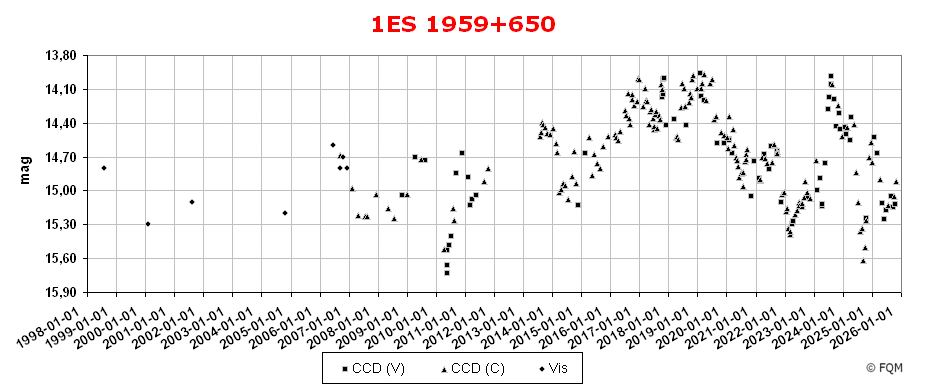
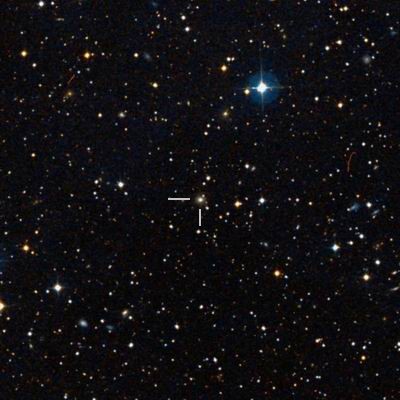
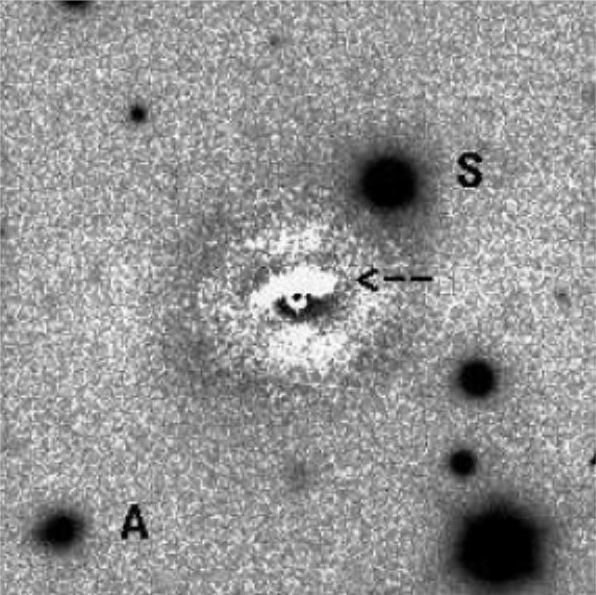 NOT
/ Size
42"× 42" / Heidt et al. (1999)
NOT
/ Size
42"× 42" / Heidt et al. (1999) |
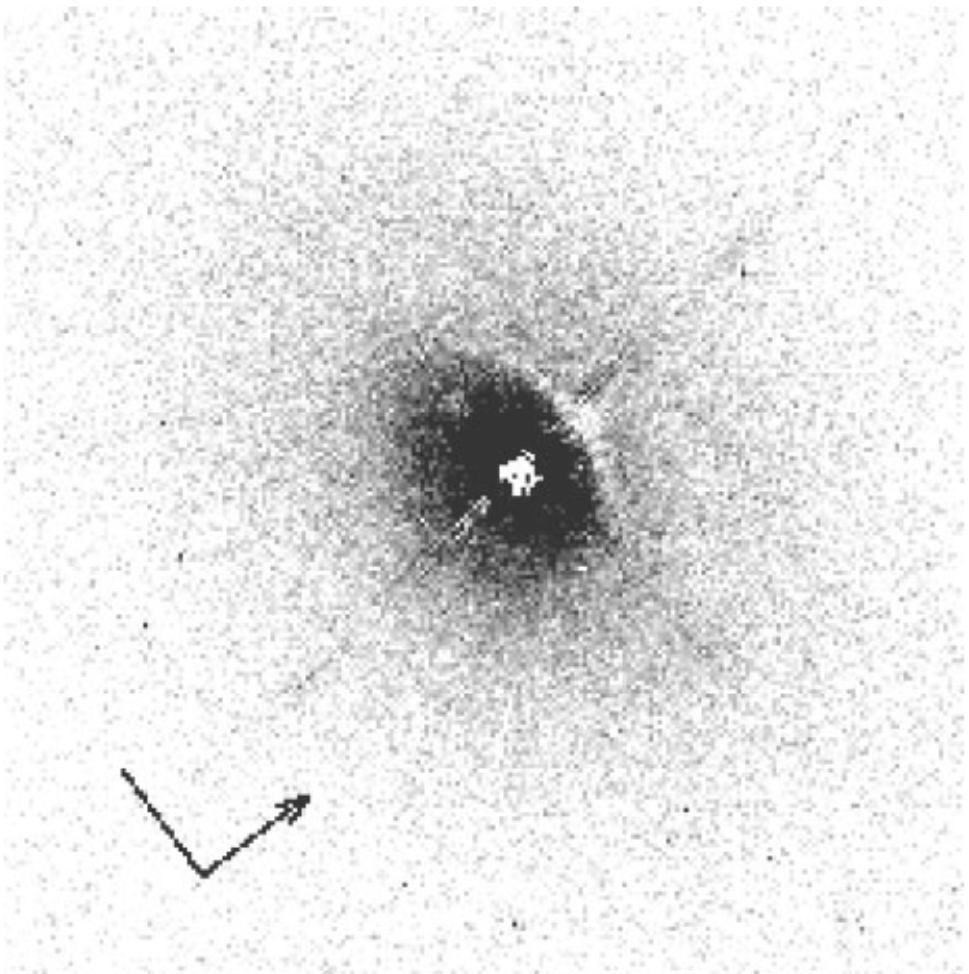 HST
/ Size
10"× 10" / Scarpa et al. (1999) HST
/ Size
10"× 10" / Scarpa et al. (1999) |
| 1ES
1959+650 is a bright and variable BL Lac object in eastern Draco, close
to star 64 Draconis. 1ES 1959+650 was discovered as a radio source in 1987 during the 4.85 GHz Radio Survey (87GB), carried out with the 91-m NRAO Green Bank Radio Telescope. Since then, it has been cataloged as a flat-spectrum radio source by various other radio surveys. In the early 1990s, the radio source was also identified as an X-ray source during Einstein IPC Slew Survey (1ES). Finally, this object was classified as a BL Lac object due to its featureless spectrum and optical polarization. A close look at the finding chart above easily reveals this BL Lac object as an extended object, consisting of a bright star-like nucleus and a surrounding nebulous halo (apparent diameter 0.28´× 0.22´). Indeed, the host galaxy of 1ES 1959+650 was classified as a gas-rich elliptical with a prominent dust lane (see high resolution images above). The complex structure is likely the result of a past merger scenario, one might compare with well known Centaurus A (NGC 5128) or Fornax A (NGC 1316), for example. The host of 1959+650 is embedded in a group of galaxies and possibly is an outlying member of galaxy cluster Zwicky 8452 (ZwCl 2000.0+6449). Curiously, three brighter galaxies nearby do not show signs of interaction with 1ES 1959+650. High resolution radio observations detected two mas jets extending to the north and south, with the northern jet being broader and more prominent. The source of the AGN activity of 1ES 1959+650 is a supermassive black hole at the centre of the host galaxy, with an estimatet mass of about 3×108 solar masses. Besides the optical, radio and X-ray, 1ES 1959+650 has been also identified as a gamma source. 1ES 1959+650 was the third BL Lac object with TeV gamma emissions detected, right after MRK 421 and MRK 501. 1ES
1959+650
is a violently variable object with a total
range of about 3 magnitudes in the optical.
Visual observers need at least a 12- to
14-inch
telescope or larger to glimpse this stellar
object. With
large aperture telescopes, 1ES
1959+650
becomes more extended with a star-like nucleus,
a clear sign of the host galaxy of this
BL Lac object.
Under dark skies, locating 1ES 1959+650 is quite easy due to its proximity to 5.2-mag star 64 Draconis, only 21´NW. 64 Draconis lies approximately half way between the stars Theta Cephei (2 Cep) and Pi Draconis (58 Dra). CCD observers, as well as visual observers, shall use the comparison stars given above. But pay attention to comparison star #5. This star was identified as an eclipsing variable in 1999, now listed as MM Draconis. MM Dra is a type W UMa variable with a range of v=14.45-14.93. ____________
In case you look for another bright interesting blazar I recommend 3C 371, a bright 14-mag object at a distance of about 0.6×109 light-years, some 11° NE of 1ES 1959+650. Furthermore, two bright 14-mag quasars, KUV 18217+6419 and PGC 61965, are located 10° E and 11° NE, respectively. Quasar KUV 18217+6419 is located at a distance of 3.2×109 light-years, whereas quasar PGC 61965 is "only" 1.5×109 light-years away. A couple of bright deep sky objects near 1ES 1959+650 shall not be missed. First turn 6° SE to a famous deep sky double, consisting of NGC 6939, a 7.8-mag open cluster, and NGC 6946, a 10-mag face-on spiral galaxy. Back in 2004, bright supernova SN 2004et lit up in NGC 6946, reaching mag 12.3 (!). The latest Supernova in NGC 6946, SN 2017eaw, was discovered in May 2017 and reached peak brightness of 12.8 mag. Both objects, open cluster NGC 6939 and galaxy NGC 6946, are only 0.5° apart. In fact, they are separated by about 20 million light-years. 6.7° NE we find NGC 7023, a bright reflection nebula, also dubbed the "Iris Nebula". Finally, turn your scope 12° to the east for famous "Cat´s Eye Nebula" (NGC 6543), an exceptionally bright planetary of vivid bluish colour. |
| Becker, R.H., White, R.L., Edwards, A.L. 1991, ApJS, 75, 1B; A new Catalog of 53,522 4.85 GHz Sources. Heidt, J., Nilsson, K., et al. 1999, A&A, 341, 683; High-resolution Imaging of Einstein Slew Survey BL Lacertae Objects. Gregory, P.C., Condon, J.J. 1991, ApJS, 75, 1011G; The 87GB Catalog of Radio Sources covering delta between 0 and +75 deg at 4.85 GHz. Lee, H.J., Lee, M.G., Kim, S.-L. 2000, IBVS, 4848, 1L; A new eclipsing Binary Star near the BL Lac Object 1ES 1959+650. Perlman, E.S., Stocke, J.T., et al. 1996, ApJS, 104, 251; The Einstein Slew Survey Sample of BL-Lacertae Objects. Scarpa, R., Urry, M., et al. 1999, ApJ, 521, 134; The Hubble Space Telescope Survey of BL Lacertae Objects: Gravitational Lens Candidates and other unusual Sources. Schachter, J.F., Stocke, J.T., et al. 1993, ApJ, 412, 541; Ten new BL Lacertae objects discovered by an efficient X-ray/radio/optical technique. Steinicke, W.; Beobachtungsliste für helle Quasare; Umkirch 1999. Steinicke, W. 1999, Interstellarum 15, 42; Unbekannte Quasare für visuelle Beobachter. Tagliaferri, G., Foschini, L., et al. 2008, ApJ, 679, 1029; Simultaneous Multiwavelength Observations of the Blazar 1ES 1959+650 at a Low TeV Flux. Véron-Cetty, M.-P., Véron, P. 2001, A&A 374, 92; A Catalogue of Quasars and Active Nuclei: 10th edition. Véron-Cetty, M.-P., Véron, P. 2003, A&A 412, 399; A Catalogue of Quasars and Active Nuclei: 11th edition. Véron-Cetty, M.-P., Véron, P. 2006, A&A 455, 776; A Catalogue of Quasars and Active Nuclei: 12th edition. Véron-Cetty, M.-P., Véron, P. 2010, A&A 518, 10; A Catalogue of Quasars and Active Nuclei: 13th edition. Villata, M., Raiteri, C.M., et al. 1998, A&AS, 130, 305; BVR Photometry of Comparison Stars in selected Blazar Fields. I: Photometric Sequences for 10 BL Lacertae Objects. |
| Links: Landessternwarte Heidelberg Chara/PEGA VSNET alert 27945: Optical high state of Blazar 1ES 1959+650 (15-08-2023) |